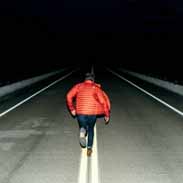Hans Holbein The Younger Flashcards, test questions and answers
Discover flashcards, test exam answers, and assignments to help you learn more about Hans Holbein The Younger and other subjects. Don’t miss the chance to use them for more effective college education. Use our database of questions and answers on Hans Holbein The Younger and get quick solutions for your test.
What is Hans Holbein The Younger?
Hans Holbein the Younger is one of history’s most celebrated artists. Born in 1497 in Germany, Holbein was introduced to art at a young age and eventually moved to Basel, Switzerland where his skills were honed under the tutelage of his father, Hans Holbein the Elder. After gaining recognition for his work there, he set off on a journey across Europe which would eventually lead him to England by 1526. Holbein quickly established himself as an artist worthy of royal patronage when he painted Henry VIII and several other members of court; this allowed him access to circles otherwise inaccessible to foreigners like himself. His paintings are known for their lifelike detail and realism that was often commented upon during the time period. He also had a distinct style that combined Northern European with Italian Renaissance influences resulting in stunning portraits that brought out each subject’s individual character in vivid clarity. In addition to painting royalty, Holbein created works depicting religious figures such as Christ and Mary Magdalene as well as mythological scenes from Greek mythology or folk tales from northern Europe. He used strong lines and bright colors which gave each piece its own unique identity while still remaining true to life-like details found throughout all his works regardless of subject matter. As a draughtsman, he excelled at creating precise linear drawings full of intricate detail. This skill can be seen in many woodcuts made from these drawings which continue to delight viewers today due to their precision and beauty. Although much about Holbein remains unknown including what led him back home after visiting England for so long, it cannot be denied that he left behind some truly remarkable pieces of artwork that stand testament to his genius even centuries later. His ability not only capture likenesses but also bring out each person’s personality makes him one of the greatest portraitists ever produced by Europe if not the world – despite being overshadowed somewhat by those who came before or after him during this era.













